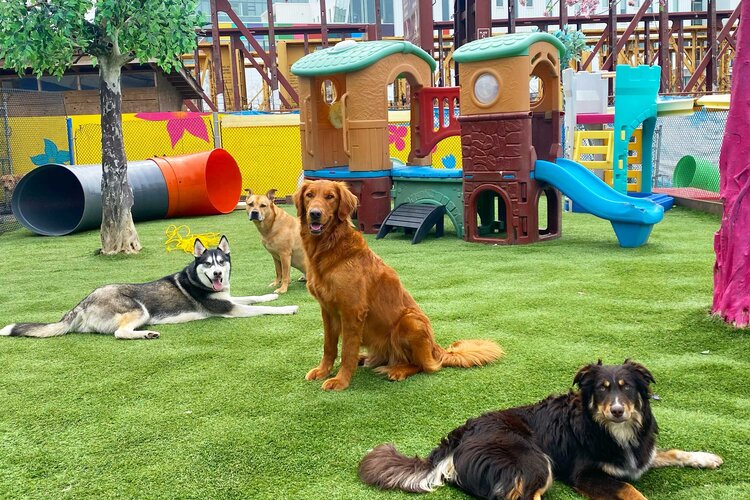
When is it Safe to Board Your Dog?
Deciding to board your dog can be both a practical necessity and an emotional challenge. As a responsible pet owner, you naturally want to ensure the timing is right for both you and your furry friend. The question of ‘when is it safe to board your dog?’ is not just about your pet’s age or the duration of their stay. It’s a multifaceted consideration that involves understanding your dog’s health, behaviour, stress levels, and the quality of the boarding facility you choose. Settling on the right time to board your pet can make the difference between a positive experience and a stressful one. In this comprehensive guide, we aim to address all aspects that you, as a pet owner, need to consider before making this important decision.
Gauging Your Dog’s Readiness
Before you decide on a boarding date for your dog, it’s crucial to evaluate their readiness. Approaching this topic with a deep understanding of your canine companion’s needs can preempt potential issues.
The Role of Age in Dog Boarding
Age plays a significant role in determining if your dog is ready for boarding. Puppies, for instance, may require extra care and are often not accepted by boarding facilities until they have received a full course of vaccinations. On the other hand, senior dogs may have special medication or mobility requirements. Understanding the specific needs associated with your dog’s age group will ensure they receive the appropriate care while boarded.
Behavioural Considerations Before Boarding
Not unlike children, dogs have personalities and temperaments that can heavily influence their boarding experience. Dogs that are well-socialized and cope well with new environments and strangers may take to boarding more quickly. Before boarding, assess whether your dog exhibits anxiety in new situations or may become aggressive towards other dogs. Preparing them with gradual socialization can be a key step in ensuring a smooth transition into a boarding situation.
Health and Vaccination Requirements
Health is paramount when it comes to boarding. Most reputable kennels require a full vaccination record before accepting a dog. Necessary vaccinations typically include rabies, distemper, and kennel cough, among others. Regular vet checkups can provide a clear picture of your dog’s health status and readiness for boarding. It’s also wise to ensure your dog is free of parasites and up-to-date with preventive treatments before their stay.
Fun fact: The term “kennel cough” originated from the instances of the illness occurring in facilities where many dogs are housed, showcasing the importance of vaccines and preventative care.
Dogs speak in a language of energy, enthusiasm, and, above all, loyalty. Boarding your pet should be preceded by a symphony of preparations that honour these qualities.
Choosing the Right Boarding Facility

Handing over the leash and trusting someone else with your dog’s care is not something to take lightly. You want to ensure that the boarding facility you choose not only meets but exceeds expectations. The well-being of your pet while you are away hinges on this pivotal choice.
Facility Research and Standards
When choosing a facility, the bare minimum standards must include cleanliness, safety, and properly trained staff. Facilities should be well-ventilated, have ample space for play and rest, and feature secure areas to prevent escape. Experts recommend a low staff-to-dog ratio as an indicator of dedicated care. A structured routine for dogs, including scheduled feeding times, exercise, and interaction, is also crucial. All these factors influence your dog’s stress levels and overall safety.
Visiting Potential Boarding Facilities
Schedule visits to potential boarding facilities to see first-hand how they are operated. Take note of cleanliness, the behaviour of the other boarded dogs, and the demeanour of the staff. This is an opportunity to ask critical questions regarding emergency protocols, feeding routines, and how they handle dogs with special needs. A trustworthy facility will not only welcome your visit but will eagerly answer all questions you may have.
Key Takeaway: Trust your instincts during these visits. If something doesn’t feel right, it’s probably not the right place for your beloved pet.
Reading Reviews and Gathering References
Like any other service, reviews and references are invaluable. Look for reviews on third-party websites to get an unbiased idea of others’ experiences with the facility. Don’t hesitate to ask the facility for references. Speaking to other pet owners can give you insight into the level of service and the care your dog will receive.
Remember, boarding facilities in Canada might operate differently than those in other countries, so local reviews can be particularly informative.
Boarding Facility Checklist:
- Facility cleanliness and security features
- Proper staff credentials and dog-to-staff ratio
- Scheduled routines and activities for dogs
- Emergency protocols and transparency of operations
- Third-party reviews and direct references
Choosing a boarding facility for your dog is much like selecting a hotel for yourself – the amenities, reviews, and vibe all contribute to the experience of your stay.
Preparing Your Dog for Boarding



Once you’ve selected an ideal boarding facility, the focus shifts to preparing your dog for their stay. Preparation can help reduce stress for both you and your pet, ensuring a smoother boarding experience.
Conditioning Your Dog for Longer Absences
Start by gradually increasing the time your dog spends away from you. Begin with short periods and then extend them. Get your pet used to a crate if they aren’t already, as many facilities use them for sleeping arrangements. The goal is to make your absence seem normal to reduce potential separation anxiety.
A fun fact for dog owners – dogs have a sense of time and can notice the difference between an hour and five. Consistent and incremental increases in your absence can help them adjust more easily to boarding situations.
Creating a Comfortable Environment
Bring along familiar items like your dog’s favourite toy or blanket to the boarding facility. These items carry your scent and can provide comfort to your pet in a new environment. If the boarding facility allows, you may also consider leaving an unwashed shirt that smells like you.
This is also the time to ensure your dog’s dietary needs are clearly communicated to the boarding staff. If your dog has a sensitive stomach or special dietary requirements, provide detailed instructions and pre-measure meals if necessary.
Special Care Instructions
Be explicit with any special care instructions. This includes medication schedules, behavioural quirks, and preferences your dog may have. The more information the boarding staff has, the better equipped they will be to provide the best care for your pet.
Key Takeaway: No detail is too small when it comes to your dog’s comfort and well-being. Clear communication is the foundation of ensuring a positive boarding experience.
Pre-Boarding Checklist:
- Gradual Crate Training and Separation
- Familiar Items to Comfort Your Dog
- Clear Dietary Instructions
- Explicit Special Care Instructions
- Updated Contact Information and Emergency Protocols
A well-prepared dog is more likely to be a happy boarder. The effort you put into preparation can greatly influence your dog’s comfort and adaptability.
Best Timing for Boarding Your Dog
Even with the best preparations, timing is everything when deciding to board your dog. You want to ensure that your dog isn’t just ready health-wise and emotionally but also has the best chances of adapting well to being boarded. Pivotal to a successful boarding experience is selecting the right timing for your dog’s individual needs and circumstances.
Ideal Duration for a First-Time Board
For first-time boarders, a ‘trial run’ can be a beneficial way to introduce your dog to the boarding experience. Consider a short one or two-day stay initially. This can help your dog get accustomed to the new environment without the stress of a prolonged separation. Observing how your dog responds to a shorter boarding period will give you valuable insights into how they might handle a longer stay.
Recognizing Stress Signs in Your Dog
Stress can manifest differently in dogs, similar to humans. Some may become withdrawn while others might become more aggressive. Recognize the signs of stress in your pet, such as changes in appetite, excessive panting, shaking, or destructive behaviour. If your dog exhibits these signs during or after a brief boarding, it may not be the right time to plan a longer stay.
Seasonal Considerations for Boarding
Certain times of the year, like holidays or summer vacation periods, can lead to busier facilities which might be more stressful for sensitive dogs. Also, keep in mind that boarding during a facility’s off-peak times might result in more individualized attention for your pet.
Note: Always consider your dog’s individual personality and needs before making a decision on the best timing for boarding.
Time is not just what you measure in hours and days, but in moments of transition for you and your pet. Boarding your dog should align with their ability to adapt and be comfortable.
Boarding Puppies vs. Adult Dogs



The boarding experience can be vastly different for puppies compared to adult dogs. Their developing immune systems, need for consistent training, and high energy levels make puppies unique boarders. Similarly, adult dogs may have established behaviour patterns and specific care requirements that can influence their boarding experience.
Distinct Needs of Puppies
Puppies are often still in the process of receiving their vaccinations, which can limit their interaction with other dogs to prevent disease exposure. Puppies also require more frequent meals, potty breaks, and hands-on attention to maintain their training schedules. When boarding puppies, facilities need to provide a balance of socialization opportunities with safety and health considerations.
Boarding Senior Dogs
Senior dogs might face age-related issues like arthritis, diminished sight or hearing, and increased anxiety. Boarding older dogs necessitates heightened attention to their comfort, with facilities needing to ensure they have easy access to resting areas without needing to navigate stairs or slippery floors. They may also require more frequent monitoring and medical care, especially if they are on medications.
Preparing Your Puppy or Senior Dog for Boarding
For puppies, ensure that they are familiar with crate training and have a clear routine to prevent stress. Socialization training is equally important to prepare them for interactions with other dogs and people. For senior dogs, a visit to the vet to confirm fitness for boarding and a detailed discussion with boarding staff about their daily requirements are essential steps.
Remember: The boarding facility staff should be made aware of any special accommodations your puppy or senior dog might need to have a safe and happy stay.
Each stage in your dog’s life brings different challenges and joys – understanding these will ensure your puppy or senior dog receives exactly what they need while they’re boarded.
Handling Separation Anxiety
Separation anxiety in dogs can lead to excess stress, destructive behaviour, and an unhappy experience for your pet when boarding. Handling your dog’s separation anxiety starts with understanding the triggers and gradually desensitizing them to your absence. Effective strategies can help minimize their anxiety and ensure their boarding stays are as comfortable as possible.
Strategies to Reduce Your Dog’s Anxiety
Start by practicing short separations, gradually increasing the length as your dog becomes more comfortable. Encourage independence by offering stimulating toys that can be enjoyed alone. Consistent routines before boarding can also instill a sense of predictability and security for your dog. Make departures and arrivals low-key to avoid reinforcing anxious behaviours. For dogs with severe separation anxiety, consultation with a professional dog trainer or behaviourist may be necessary.
Understanding and Mitigating Common Concerns
Common concerns that cause stress for dogs when boarding include the absence of their owners, an unfamiliar environment, and the presence of unfamiliar dogs. Mitigating these concerns involves thorough preparation and possibly behavioural training in the lead-up to the boarding experience. Ensure the boarding facility is informed about your dog’s separation anxiety and discuss measures they can take to help your dog adjust.
Equipping your dog with the skills to manage anxiety is like giving them a security blanket—they can find comfort even when you’re not there.
Creating a Positive Goodbye
A positive goodbye is crucial for dogs with separation anxiety. This doesn’t have to be a long or emotional send-off; in fact, that can increase anxiety. Instead, calmly and casually part ways with your dog, reassuring them of your return with your actions rather than words. If your dog knows that your absence is not a big deal, they’re more likely to remain calm after you leave.
Remember, each dog’s anxiety is unique, and what works for one may not work for another. Troubleshooting this aspect might be a process of trial and error, but with patience and the right techniques, separation anxiety can be managed effectively.
Insight: The key to alleviating separation anxiety is building your dog’s confidence and comfort with your absence. This doesn’t happen overnight but is a result of consistent and loving training.
When Boarding Isn’t the Right Choice
Boarding can be a convenient solution for pet care when travelling, but it isn’t suitable for every dog or situation. It is essential to recognize when boarding may not be in your dog’s best interests and to consider viable alternatives.
Alternatives to Boarding
If your dog struggles with the boarding environment or has special needs that cannot be adequately met, alternatives like pet sitters or at-home care may be more appropriate. Pet sitters can provide individual attention in the comfort of your dog’s home environment, reducing stress and maintaining a routine. Similarly, arranging for a trusted friend or family member to stay with your dog can offer both care and companionship.
Signs That Your Dog Should Not be Boarded
There are several indicators that boarding may not be the best option for your pet. Dogs that suffer from severe anxiety, aggression issues, or chronic health problems requiring specialized care might not thrive in a boarding facility. If your dog has recently undergone surgery or is recovering from an illness, the solitude of a home environment with a sitter could be more conducive to healing.
Take Note: Your primary concern should always be the well-being and comfort of your dog. An honest assessment of their temperament and health will guide you to the best care solution while you’re away.
When boarding is not the answer, the embrace of a familiar environment or the touch of a known hand can provide the solace your dog needs.
Evaluating Your Options
Before making your decision, weigh the pros and cons of each option. Consider factors like the length of time you’ll be away, the specific needs of your dog, and the level of care each alternative can provide. Always have a contingency plan in case your chosen method of care needs to change unexpectedly.
Understanding your dog’s unique needs and limitations is key to finding the right care solution. Broadly speaking, the goal is always to prioritize the health and happiness of your pet during your absence.
Key Considerations:
- Severity of your dog’s anxiety or health issues
- Whether the dog requires specialized care
- Availability of trustworthy and reliable pet sitters or caregivers
- Cost implications of various care options
By taking a thoughtful, loving approach to your dog’s care while away, you’ll help ensure a peaceful time apart and a joyful reunion.
Post-Boarding: Reuniting with Your Dog



After a boarding stint—be it long or short—a reunion with your dog can be an emotional moment filled with joy. However, it’s crucial for pet owners to understand the transition their dogs may go through upon returning home and how best to manage this period for a smooth reintegration to daily life.
What to Expect When Picking Up Your Dog
Upon picking up your dog from boarding, you may notice changes in behaviour, which can range from extreme excitement to subdued passivity. Some dogs may temporarily exhibit clinginess, increased thirst, or hunger due to the excitement of your return. Others could exhibit signs of stress such as panting, whining, or taking time to settle back into home life.
Insight: These reactions are normal and should balance out as your dog readjusts to their familiar home environment. The key is to be patient and understanding as they readapt.
Transitioning Back to Home
To help ease your dog back into home life, maintain the same routines they followed before and during boarding. This consistency can be comforting after the changes they’ve experienced while away. Keep an eye out for any health issues that may have arisen while boarding, such as cuts, weight loss, or lethargy, and contact your veterinarian if necessary.
Reaffirming your bond through play, walks, and affection will remind your dog that their home is a source of love and safety. Allow some quiet time for your dog to relax and fully decompress in their space.
Reunion is not just a singular event, but a phase within which your dog reacquaints themselves with the safe haven of home and the warmth of your presence.
Monitoring Your Dog’s Health Post-Boarding
It’s advisable to watch for any signs of illness following a boarding stay. Kennel cough, for example, is a common concern even amongst vaccinated dogs due to its contagious nature. Be vigilant in monitoring your dog’s health and speak to the boarding facility if any issues arise so they too can take necessary precautions with their other charges.
Reminder: When reunited with your dog, provide a stable and calming environment to support their transition from boarding back to being home.
Wrapping Up
Boarding your dog is a significant decision that requires careful consideration of multiple factors. The readiness of your dog, choosing the right boarding facility, preparing your pet for the boarding experience, and understanding the best timing are all critical components to ensure a positive outcome. For puppies and senior dogs, their specific needs must be taken into account, and for those with separation anxiety, extra preparation can make all the difference.
In cases where boarding is not suitable, alternative arrangements such as pet sitters can provide a solution. As pet owners, it’s our responsibility to ensure our dogs’ health and happiness above all else. With this guide, you should feel more equipped to make informed decisions about when it’s safe to board your dog, making sure they’re as comfortable and stress-free as possible while you’re away.
FAQs
Does the size of the boarding facility matter for my dog’s well-being?
The size of the facility isn’t as important as the quality of care and attention your dog will receive. A small facility that offers personalized care can be just as good, if not better, than a larger one that may not give your dog the individual attention they need.
How soon before boarding should I start preparing my dog?
Start preparing your dog as early as possible, ideally several weeks before boarding. This gives ample time for crate training, acclimating your dog to longer periods of your absence, and ensuring their vaccinations and health checks are up-to-date.
Is it safe to board my dog for an extended period, such as a month?
Yes, it can be safe to board your dog for an extended period, but it’s essential to ensure they’re comfortable with the facility and the staff. A trial boarding period can help determine how well your dog can adjust to longer stays.
What should I do if my dog is not eating or behaving normally after returning from boarding?
If your dog is showing changes in behavior or appetite post-boarding, give them some time to readjust. If the issues persist beyond a couple of days, consult your veterinarian to rule out any health concerns.
Can I visit my dog during their boarding stay?
Many facilities allow visits, but it’s important to consider how this might affect your dog’s anxiety levels. Frequent visits could make it harder for your dog to settle into the boarding routine. Always speak to the boarding facility staff to make the best decision for your pet.

